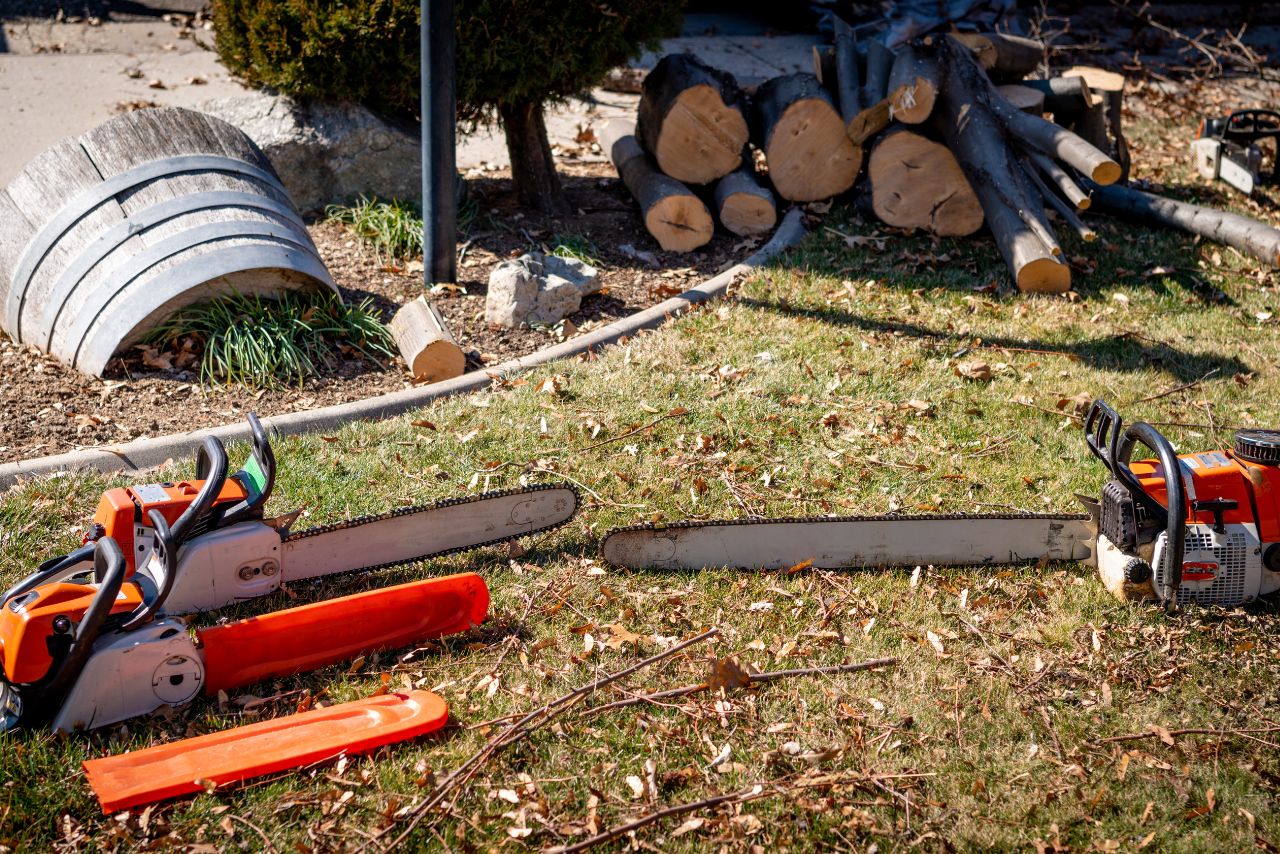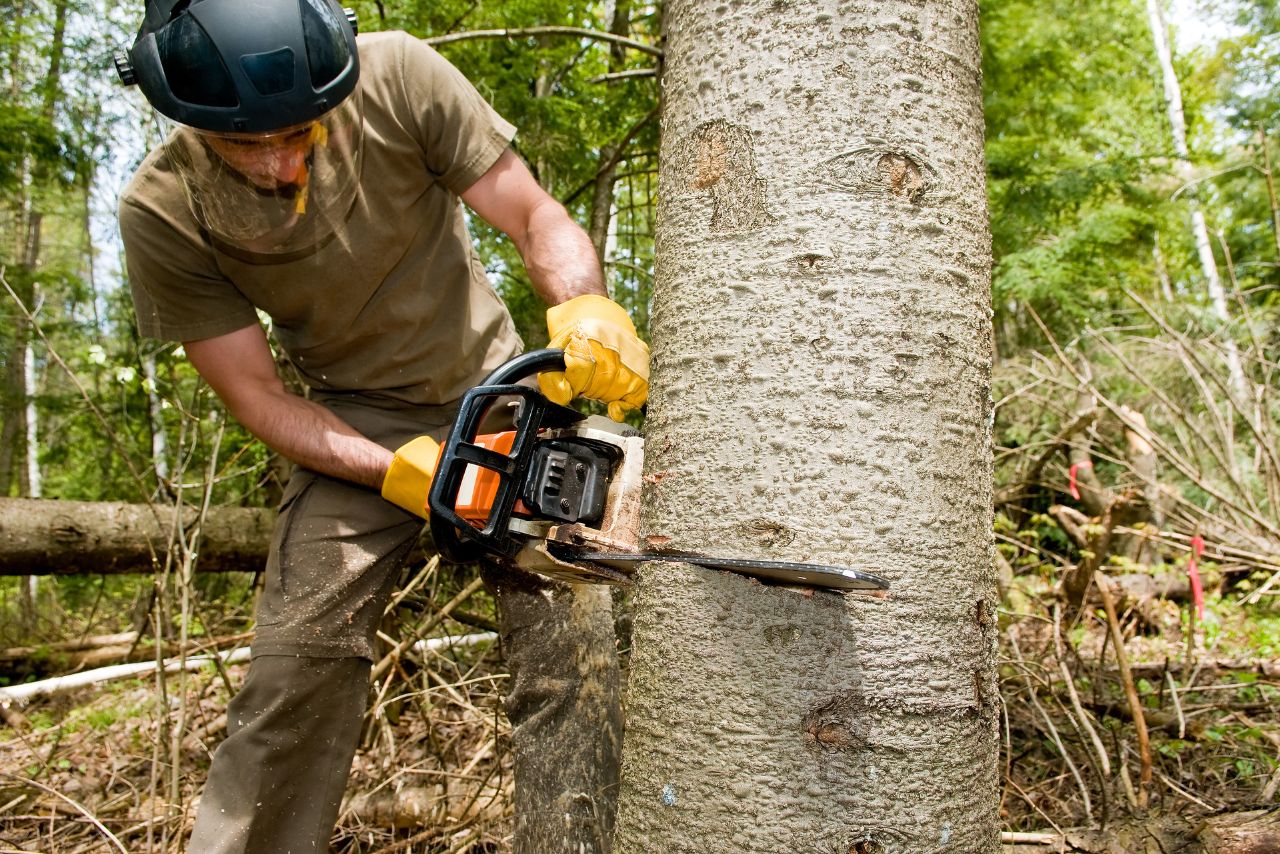4 Cycle Chainsaw vs 2 Cycle Chainsaw: When it comes to chainsaws, there are two main types that dominate the market: 4 cycle chainsaws and 2 cycle chainsaws. But what exactly sets them apart? In a nutshell, the difference lies in their engine design and fuel requirements.
A 4 cycle chainsaw operates on a four-stroke combustion system, similar to that of a car engine, while a 2 cycle chainsaw uses a simpler two-stroke system.
This fundamental dissimilarity affects not only their performance but also factors such as maintenance needs and overall convenience. So let’s delve deeper into the comparison between these two popular types of chainsaws.
Whether you prioritize power output or ease-of-use will determine which type suits your needs best, so keep reading our article to explore further comparisons and make an informed decision!
Table of contents
The Difference Between 4 Cycle Chainsaw vs 2 Cycle Chainsaw:

When it comes to chainsaws, one important distinction to understand is the difference between 4 cycle and 2 cycle engines. Here’s a breakdown of their characteristics:
Engine Design:
Fuel Mixing:
Power Output:
Weight & Size:
Advantages of Using a 4 Cycle Chainsaw:
A 4 cycle chainsaw offers several advantages over its 2 cycle counterpart. Here are some key benefits:
Benefits of Choosing a 2 Cycle Chainsaw:
When it comes to chainsaws, one important decision you need to make is whether to go for a 2 cycle or a 4 cycle model. While both have their merits, there are several compelling reasons why choosing a 2 cycle chainsaw can be advantageous. Here are some benefits:
Is a Chainsaw 4 Cycle?
Chainsaws can be either 2-cycle or 4-cycle engines. The type of engine you choose will depend on your needs and preferences.
2-cycle engines are more common in chainsaws because they are lighter, more powerful, and easier to start than 4-cycle engines. However, they also produce more emissions and are less fuel-efficient than 4-cycle engines.
4-cycle engines are more environmentally friendly and fuel-efficient than 2-cycle engines. They also produce less noise and vibration. However, they are heavier and more expensive than 2-cycle engines.
What Does 4 Cycle Mean?
A 4-cycle engine, also known as a 4-stroke engine, is an internal combustion engine that completes one operating cycle in four distinct strokes of the piston. These strokes are:
2 Cycle vs 4 Cycle Difference:

Here is a table summarizing the key differences between 2-cycle and 4-cycle engines:
| Feature | 2-Cycle Engine | 4-Cycle Engine |
|---|---|---|
| Power | More powerful | Less powerful |
| Weight | Lighter | Heavier |
| Emissions | More emissions | Lower emissions |
| Fuel Efficiency | Less fuel-efficient | More fuel-efficient |
| Noise | More noise | Less noise |
| Vibration | More vibration | Less vibration |
| Ease of starting | Easier to start | More difficult to start |
| Cost | Less expensive | More expensive |
In general, 2-cycle engines are a good choice for applications where power and weight are important, such as chainsaws and motorcycles.
4-cycle engines are a good choice for applications where fuel efficiency, emissions, and noise are important, such as cars and trucks.
Which Is Better 2-Stroke or 4-Stroke Chainsaw?

To help you decide which type of chainsaw is right for you, consider the following factors:
Is a 2-Cycle or 4-Cycle Engine Better?

Whether a 2-cycle or 4-cycle engine is better depends on the specific application. Here’s a comparison of the two types of engines:
2-Cycle Engine Advantages:
4-Cycle Engine Advantages:
Applications:
2-cycle engines are commonly used in applications where power-to-weight ratio is important, such as chainsaws, leaf blowers, and motorcycles. They are also used in some lawnmowers and trimmers.
4-cycle engines are more common in applications where fuel efficiency, emissions, and noise are important, such as cars, trucks, lawnmowers, and generators.
The choice between a 2-cycle and 4-cycle engine depends on the specific application and the user’s needs and preferences. If power-to-weight ratio is important, a 2-cycle engine may be a better choice. If fuel efficiency, emissions, and noise are important, a 4-cycle engine may be a better choice.
Do 4 Cycle Engines Use Regular Gas?
Yes, you can use regular gasoline in a 4-cycle engine, but it is not always the best option. The octane rating of the gasoline is a measure of its resistance to knocking, which is an uncontrolled combustion that can damage the engine.
Regular gasoline has an octane rating of 87, while premium gasoline has an octane rating of 91 or higher.
Factors to Consider When Deciding Between a 4 Cycle and a 2 Cycle Chainsaw:
When deciding between a 4 cycle and a 2 cycle chainsaw, there are several factors you should consider. Let’s take a closer look at these factors:
Power and Performance:
Fuel Efficiency:
Maintenance Requirements:
- When it comes to maintenance requirements, both types have their pros and cons:
Environmental Impact:
- If you’re environmentally conscious or work in noise-sensitive areas (such as residential neighborhoods), you might want to opt for a four-cycle chainsaw since they tend to produce lower emissions.
Price Range:
- Generally speaking, two-cycle chainsaws are cheaper upfront than their four-stroke counterparts. However, the overall cost of a chainsaw includes factors like fuel consumption and maintenance requirements.
Watch: 4 Cycle Chainsaw vs 2 Cycle Chainsaw:
Last Talk: 4 Cycle Chainsaw vs 2 Cycle Chainsaw:
When it comes to choosing between a 4-cycle chainsaw and a 2-cycle chainsaw, there are several factors to consider. Firstly, the power and performance of both types vary significantly.
While the 2-cycle chainsaws tend to be lighter and more maneuverable, especially for smaller tasks like pruning or cutting firewood, the 4-cycle chainsaws offer greater torque and are better suited for heavy-duty tasks such as felling large trees.
Secondly, maintenance plays a crucial role in determining which type of chainsaw is right for you. The 4-cycle chainsaws require separate compartments for oil and fuel, making them easier to maintain as there’s no need to mix oil with gas.
On the other hand, the 2-cycle chainsaws have a simpler design but necessitate mixing oil with gas at specific ratios.
Ultimately, your choice should be based on your specific needs and preferences. Consider the type of work you will be doing regularly and evaluate factors such as power requirements and maintenance convenience before making a decision.
FAQs
Which One Is More Powerful, a 4 Cycle or A 2 Cycle Chainsaw?
Generally, 2 cycle chainsaws are considered more powerful as they produce higher RPM (rotations per minute) due to the optimized power-to-weight ratio. However, the power output also depends on the specific model and brand.
Are There Any Benefits of Using a 4 Cycle Chainsaw Over a 2 Cycle One?
One major advantage of a 4 cycle chainsaw is that you don’t need to mix fuel and oil, which can be a hassle for some users.
Additionally, 4 cycle engines tend to be quieter and generate less emissions compared to 2 cycle engines.
Which Type of Chainsaw Is Better for Professional Use?
Both 4 cycle and 2 cycle chainsaws can be suitable for professional use.
The choice depends on factors such as the nature of the work, personal preferences, and the specific requirements of the job.
It is recommended to consider the power, durability, and reliability of the chainsaw before making a decision.
Do 4 Cycle Chainsaws Require More Maintenance than 2 Cycle Chainsaws?
Generally, 4 cycle chainsaws require less maintenance as they have a separate oil reservoir and do not require fuel mixing.
However, routine maintenance, such as regularly checking and changing oil levels and filters, is still necessary for optimal performance.
Are 4 Cycle Chainsaws Heavier than 2 Cycle Ones?
Due to the additional components like the separate oil reservoir, 4 cycle chainsaws tend to be slightly heavier than 2 cycle chainsaws.
However, the weight difference may not be significant and can vary depending on the specific models.
Latest Posts!
- How to Cut Bamboo Sticks Without A Saw? (Explained!)
- Are Bushranger Chainsaws Any Good? (Here Is Truth!)
- 4 Cycle vs 2 Cycle Trimmer! (Which Is Right for You!)
- Stihl Chainsaw Fuel Mixture! (Here Is The Correct Ratio!)
- How to Use Chainsaw Bumper Spikes? (Explained)
- How to Port a Chainsaw? (Master the Art of Chainsaw Porting!)











Leave a Reply